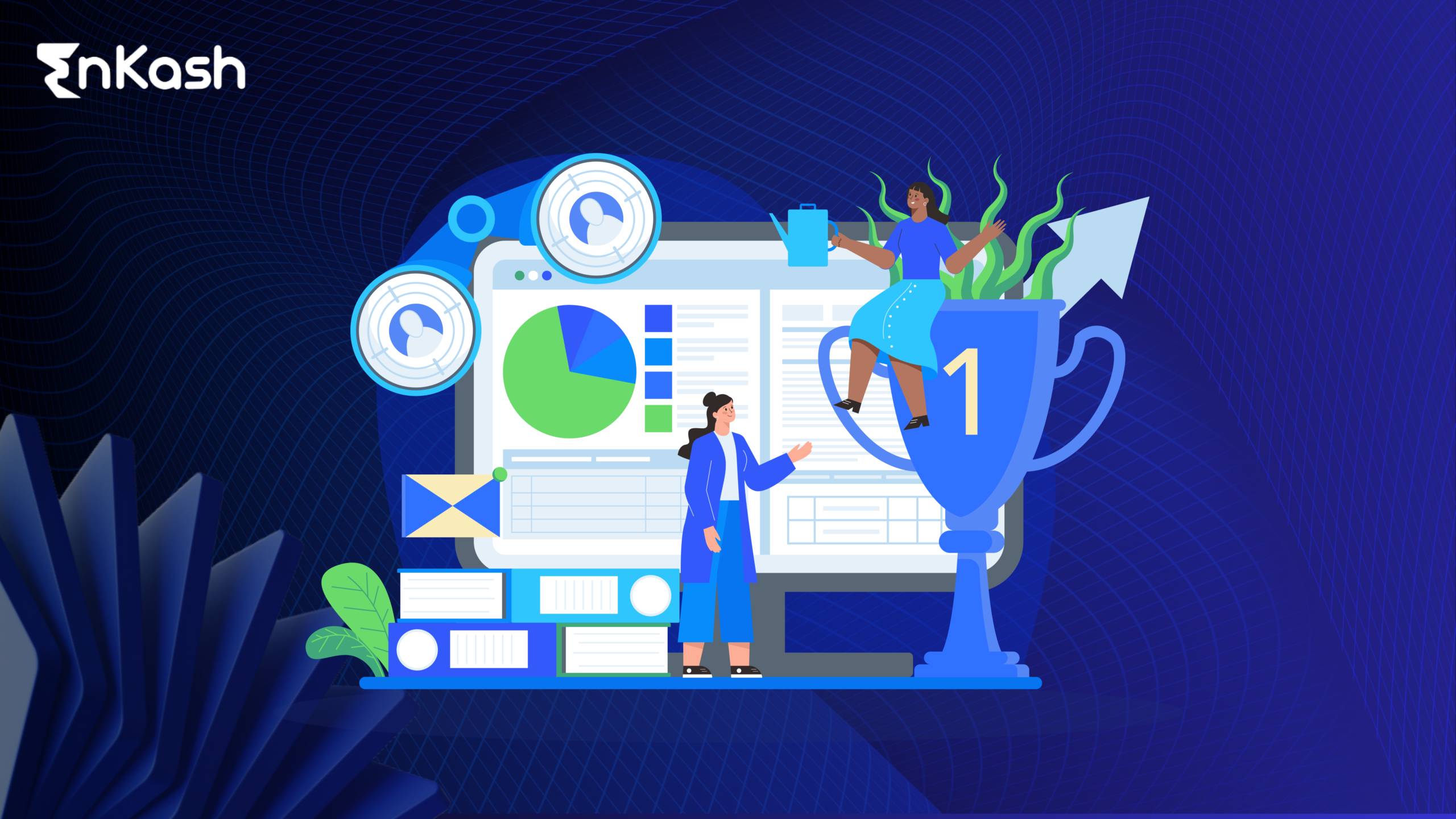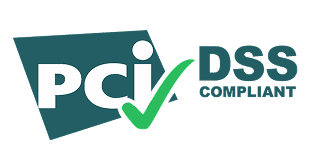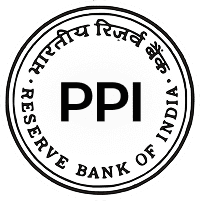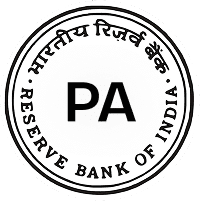What is Human Resource Development? Let’s use an example to understand this question. There is a garden called an organization. The employees of that organization are plants. Human Resource Development is sunlight, nutrients, water, and a good environment for those plants. It is a way of growing your team and providing them with best practices.
Human Resource Development definition says HRD programs help employees develop various skills. These are better communication skills, business performance management skills, talent acquisition skills, leadership qualities, and culture-building. They also include role-specific knowledge. In return for this investment, employees enhance the organization’s work efficiency.
A few days back, human resource development focused only on selecting the right person for specific job roles. But now, as employers have understood the importance of human resource development, the focus has shifted from choosing the right people for the job to also providing them internal support. This support is meant to increase the organization’s excellence.
A Forbes 2023 survey found that 45% of employees struggled with changes at work. The survey shows that 47% of HR leaders prioritized employee experience. They did this after analyzing employee satisfaction surveys.
Human Resource Development – Objectives
Below, we have discussed the objectives of HRD:
- Enhancing Skills: Individual development is one of the primary objectives of HRD. These programs give employees the right attitude toward various challenges. Employees also acquire technical and managerial skills for various projects. A LinkedIn report says that 94% of Indian firms prioritize employee upskilling amid AI changes.
- Organizational Development: An organization with skilled, knowledgeable employees is bound to deliver success. They bring more creative and innovative solutions to the table to overcome any challenge. The LinkedIn Workplace Learning Report 2024 reveals that 90 percent of organizations are worried about employee retention and how they will provide them with learning opportunities.
- Leadership Development: An organization with skilled people and a better work environment creates better leaders. This is another prime objective of HRD. A recent study by Deloitte reveals that companies allocate 20% of their L&D budget to leadership training in India.
What is the Human Resource Development Process?
If Learning and Development are prioritized, 50% of employees are likely to stay for more than 5 years. The Human Resource Development process involves various steps. These are – training and development, performance management, career development, knowledge management, and succession planning. Scroll down to know the answer to the question: What is the human resource development process?
Training and Development
Human Resource Development (HRD) is enforced through various training and development programs. There are two types of training methods: on-the-job training and off-the-job training. On-the-job training is given to the working employees. In contrast, off-the-job training is provided to non-working persons engaged with that organization for knowledge-gain purposes. Training is provided through various seminars, meetings, workshops, online courses, etc.
Check out the below-mentioned process to know the steps involved in this human resource development process:
- Regular Assessments
- Program Designing
- Delivery and Implementation
- Evaluation
Talent Management
Talent is a human resource development process that varies from person to person. Different people have different kinds of talents. Every person is talented in their way. Suppose an organization has 100 employees. Then, each will have 100 unique talents. So, it is crucial to channel those talents to maximize their productivity. Talent Management includes managing the abilities, competencies, and skills of employees. Everything done to recruit, retain, develop, reward, and make people perform is a part of Talent Management.
Check out the below-mentioned human resource development process to learn the steps involved.
- Recruitment Process
- Onboarding Process
- Retention Strategies
- Employee Engagement Programs
- Performance Management
Performance Management
Performance Management refers to the human resource development process of establishing performance standards for employees, giving proper feedback, conducting performance-based appraisals, and providing developmental opportunities to ensure that the performance of all employees is evaluated in time.
The below points show the Performance Management process:
- Strategies on the Individual Level
- Succession Planning
- Training and Development Programs
- Mentorship and Coaching Plans
- Learning Management Systems
- Data Analytics
- E-Learning Platforms
- Diversity Training
Career Development
Career Development programs allow employees to explore career paths, growth opportunities, and career advancement. They can offer job rotation mentoring, succession planning, etc.
Check out the below-mentioned process to know the steps involved in this human resource development process:
- Goal Setting
- Regular Feedbacks
- Performance Appraisal
- Recognition and Employee Rewards
Knowledge Management
Organizations offer various ways to capture, share, and organize knowledge. This collaborative process reflects the collective expertise of the employees. It also allows for a continuous learning approach.
Check out the below-mentioned human resource development process to learn the steps involved:
- Leadership Training Programs
- Mentorship and Coaching
- Succession Planning
- 360 Degree Feedback
- Documentation and Sharing
- Collaborative Platforms
- Training and Development Programs
Organizational Environment Management
If an organization can not provide the right culture and environment, employees will burn out from work quickly. In that case, they will need more motivation to work with that organization. Keeping in mind the importance of human resource development, it is important to provide the right environment and culture to all employees.
Check out the below-mentioned process to know the steps involved in this human resource development process:
- Culture Development
- Change Development
- Communication Strategies to Avoid Communication Gap
- Inclusivity Strategies
- Employee Engagement
- Surveys and Feedbacks
- Wellness and Work-Life Balance
- Training and Development Strategies
- Cross-culture Competence
- Flexible Work Arrangements
- Employee Assistance Program
Effective Communication
One of the objectives of HRD is to ensure smooth functioning and foster collaboration. However, communication gaps can lead to understanding and increased productivity.
First, active listening and comprehending the meaning of what someone else is saying is the most important thing. This is known as active listening. It means a complete engagement with the speaker. Listening attentively encourages clarity. Better clarity will give a better comprehension of the information. Better comprehension will produce better interpretation.
Second, clarity in messaging is vital. Messages conveyed by the HR team or seniors during meetings should be concise and to the point. Ambiguity creates confusion. Therefore, using simple language can enhance message readability. If someone uses a complex method or language to convey a message, this will only create confusion. The aim of that message will never be fulfilled. The audience needs to understand the concept to deliver proper output.
The third important thing is to encourage communication between team members is a great way to build trust. Team members must feel comfortable to express their views. Thus, companies will get more unique, creative ideas. Feedback sessions can also be essential in supporting the team. These sessions give employees a chance to voice any concerns they may have.
Another important objective of HRD is to use several communication tools. Different tools for different purposes. For example, emails are good for formal communication. Instant messaging can speed up a discussion. Choosing the right one can lead to better quality of communication.
Lastly, ensure that communication skills training is a part of the program, anything from nonverbal communication and conflict resolution. Investing in your employees’ development encourages a culture of continuous improvement.
Succession Planning
Succession Planning, one of the main objectives of HRD, is divided into two steps – identifying high-potential employees and mentoring them to become the best successor. First, any current leader retires or leaves his or her position in the organization. Then, the succession planning programs ensure a smooth process for the next employee to fill that position. Organizations must conduct regular assessments and develop talent identification and training programs to prepare the best successor.
What are the Functions of the HRD Process?
As you have understood the objectives of HRD, we can now proceed to its functions:
- Human Resource Planning: Organizations imply human resource requirements based on organizational goals through human resource programs. It helps to analyze the supply of human resources within the organization. Organizations identify gaps between the demand and supply of human resources. They develop various strategies to address gaps.
- Recruitment and Selection: The first thing any organization does is define specific job requirements and specifications. Then they attract candidates by using various channels and public platforms. For instance, nowadays, social media and various public job-searching portals are using this process. Next, they do screening of candidates based on qualifications and experience as per vacant posts. After that, the candidates are interviewed and assessed to choose the most suitable candidates. After final selection, organizations or companies offer job letters to them. Finally, they conduct the onboarding process for new employees.
- Performance Management: Employers set clear performance expectations and goals for employees after they join the organization. Organizations provide regular feedback and coaching and conduct performance appraisals to assess employee performance. They also offer various rewards and recognition based on performance over time.
- Training and Development: Companies will first identify training needs based on specific performance gaps and organizational goals. Once they have identified the training needs, they can then design training programs to achieve the identified needs. The next step after identification is the implementation of the training programs with different methods.
- Career Development: Any responsible organization helps employees identify their career goals and aspirations by providing counseling and guidance. It also offers job rotation and cross-training opportunities. Additionally, it creates employee development plans. Most successful organizations have mentorship or coaching relationship programs to help their employees connect and grow. The mentorship helps the employee to go through their career journey effectively. A strong mentorship can also improve organizational commitment and make employees more satisfied at their jobs.
- Organization Development: Organizations must diagnose their challenges. Then, they must design and implement interventions to improve organizational effectiveness. HRD programs also foster a culture of innovation and change.
- Employee Engagement and Motivation: Organizations conduct employee satisfaction surveys monthly or quarterly. They also introduce employee recognition programs to motivate the employees. These programs create a constructive environment at work, promote the work-life balance, and enhance the overall well-being of the employee.
- Compensation and Benefits: An organization should design competitive compensation packages to retain employees and motivate them. Management should communicate compensation and benefits policies to employees every year. Payroll and benefits must be managed effectively and all labor laws should be followed.
- Employee Relations: An organization needs to manage Employee grievances and disputes. Maintain compliance with labor laws and provide Diversity and Inclusion by managing labor relations.
- Succession Planning: This is a process to identify, develop, and replace leaders and managers within an organization. This is done when any manager or leader leaves a company or they are replaced. The company is responsible for recognizing and creating the best person to replace them.
- Knowledge Management: Knowledge Management is also an important function of Human Resource Development. It involves capturing, sharing, and utilizing organizational knowledge. Developing knowledge management systems is crucial. Facilitating knowledge transfer between employees is necessary. Thus, they can utilize the diverse knowledge of the employees.
- HR Metrics and Analytics: It is also important to use modern tools to analyze areas for improvement in employee development. The following points suggest measures to be taken for this purpose:
- Identify skill gaps: Managers should assess the current skills of employees. After assessments, they must discuss it with the employees so that they can work on their weak areas and bridge the skill gap.
- Set work-specific goals: Well-defined objectives can guide on what to do to improve. Employees should know what their company expects from them.
- Use the feedback mechanism: Regular assessment and feedback from managers and the HR team can help the employees to track their progress.
- Encourage self-assessment: Employees should be prompted to evaluate their skills. This gives a sense of ownership over personal growth.
- Implement well-planned programs: Initiatives taken for HRD purposes must be customized to suit individual needs. Development initiatives must be customized to suit individual needs. One-size-fits-all solutions often need to be more effective.
- Measure outcomes: Regular evaluation of development programs is crucial. Analyzing data can reveal what works and what does not.
- Measuring the effectiveness of HR programs and initiatives: Considering the importance of human resource development, the identification of HR programs and initiatives is vital for an organization. If the assessment is done properly, it helps to understand the outcomes. It shows what can work and what can not. Surveys and feedback are common tools for this. They help in gathering employee perspectives. Incorporating both qualitative and quantitative data improves analysis and reflects a comprehensive approach. Organizations must also remain flexible. Adapting strategies based on the findings is important. Continuous improvement should be a goal for every HR department.
- Legal Compliance: Companies must ensure compliance with employment laws and regulations by managing HR documentation and records.
Also Read: HR Compliance Checklist
- Emerging Trends and Technologies: Knowing recent trends is important for any organization to fulfil the objectives of HRD. Staying updated on HR trends and best practices is crucial. Adapting updated HR technology improves efficiency and effectiveness. This is necessary to meet future challenges.
Importance of Human Resource Development
Let’s understand the importance of Human Resource Development. Human Resource Development ensures systematic improvement of the knowledge and skills of an employee. It is a strategic process to align with the goals and objectives of the organization. Human capital or resources is the backbone of an organization. Hence, if it can be utilized properly, any organization will achieve its future goals. It has a significant role in achieving organizational success by maximizing the potential of its human capital.
Advancement of Work Efficiency
- Employee Skill Development: HRD teaches the employees about how to work effectively and efficiently. Training programs, workshops, and on-the-job training help employees acquire new knowledge.
- Knowledge Enhancement: The importance of human resource development is that it empowers employees to make informed decisions. This can only be achieved through knowledge enhancement. A skillful and knowledgeable employee makes a significant contribution to the success of an organization.
- Performance Improvement: Through performance management systems and development plans, the objectives of HRD are to help employees identify areas for improvement. They develop strategies to enhance performance.
Organizational Effectiveness
- Strategic Alignment: Human Resource Development ensures employee development is aligned with the organization’s strategic goals. Thus, employees contribute directly to achieving business objectives.
- Innovation and Creativity: One of the objectives of HRD is to stimulate innovation by fostering a learning culture. This enables the employees to have more creative thinking. It also helps organizations match evaluated market trends.
- Problem-Solving: HRD equips employees with the tools and skills to identify and solve problems effectively, which improves decision-making and increases efficiency.
Employee Satisfaction and Retention
- Career Growth: It offers career growth through training development and mentoring programs. This fosters a sense of job satisfaction and commitment.
- Employee Engagement: Companies demonstrate their commitment to employees’ growth by providing employee engagement activities, which increases engagement and motivation.
- Decrease in Turnover Cost: When an employee leaves a company or is required to be replaced, the company incurs an intangible expense known as turnover cost. Employees who are satisfied with their jobs are more prone to stay in the company; this marks the importance of human resource development.
Organizational Culture Development
- Positive Work Environment: Human Resource Development creates a positive work environment by fostering collaboration, teamwork, and open communication.
- Values and Ethics: HRD can be used to reinforce organizational values and ethics, ensuring employees behave according to the company’s culture.
- Change Management: Companies can manage changes within an organization through HRD programs. It equips employees with the skills and knowledge to adapt to new processes and technologies.
Competitive Advantage
- Talent Acquisition: One of the objectives of HRD is to help organizations identify top talents by offering various developmental programs.
- Customer Satisfaction: To increase customer satisfaction and loyalty, an organization needs to provide employees with the knowledge and skills to deliver a high level of customer service.
- Organizational Reputation: A good HRD function enhances the organization’s reputation as an employer, which in turn attracts the best talent and enhances a strong employer brand.
The importance of Human Resource Development lies in the success of an organization. If a company invests in developing its employees, it can eventually increase performance, improve the efficiency of the organization, enhance employee satisfaction, strengthen the organization’s culture, and gain a competitive advantage.
Learn Ways To Increase Employee Retention
How can EnKash help with effective HRD strategies?
EnKash is a leading rewards and recognition platform that can significantly contribute to your organization’s HRD strategies. Our comprehensive suite of tools and features offers a powerful solution to motivate, engage, and retain your employees.
EnKash’s Rewards and Recognitions Suite
Our Rewards and Recognitions suite provides a robust platform for acknowledging and rewarding employee achievements. Key features include:
- Personalized Rewards: Employees can choose from a wide range of rewards, including gift cards, vouchers, experiences, and more. This personalization ensures that recognition is meaningful and appreciated.
- Bulk Upload: Effortlessly allocate rewards by uploading employee data in bulk
Also Read: Bulk Payout Solution
- Automated Notifications: Send automated alerts to employees about awarded points and redemption options via WhatsApp, and email
- Wide Variety of Brands: Partnering with a vast network of brands to offer a diverse selection of options
- Open Voucher Functionality: Issue open vouchers directly from the dashboard and reward employees on the spot
- Flexible Redemption: Enabling employees to redeem vouchers online or in-store, providing convenience and flexibility
- Integration with HR systems: EnKash seamlessly integrates with your existing HR systems, streamlining the process of awarding and managing rewards
- Easy Management: Simplifying the process of issuing and tracking brand vouchers
Conclusion
Human Resource Development (HRD), as a department, is the lifeline of an organization, providing necessary inputs to help it grow and stay competitive. As per Human Resource Development definition and practical examples, when effectively applied, it motivates employees to become more dynamic, helping the organization as a whole to thrive.
The importance of Human resource development is immense; HRD is not only for the individual or for the organization, but for society at large as a source of economic growth, innovation, and social progress.
If organizations stimulate their human resources to develop themselves, they meet the objectives of HRD, creating a workforce that helps the organization to prosper and contribute to the development of society.
FAQs
What is the HRD audit?
In HRD audits, companies evaluate the performance of the human resources. Based on these audits, employees learn about their weaknesses and strengths and work accordingly.
What is the scope of HRD?
The Human Resource Development process visualizes the identification and development of personnel for current and future organizational needs. Thus, companies identify their real talents and utilize them properly.
What are Human Resource Development jobs?
Human Resource Development jobs include training specialists, organizational development consultants, career counselors, performance management experts, and knowledge managers.
What is the difference between HRD and HRM?
Human Resource Development (HRD), a strategic process to develop various skills and knowledge among employees, comes after the HRM starts its functioning. Human Resource Management (HRM) involves from hiring to every activity that involves employees.
What are Human Resource Development Examples?
Examples of HRD include training programs, mentorship, job rotations, leadership development programs, and performance appraisal systems.
What are the factors in Human Resource Development?
Factors that impact HRD are organizational culture, motivation of employees, technology, economic conditions, and governments.
What are the challenges of Human Resource Development?
The challenges associated with HRD are as follows:
- Resistance to change
- Budget constraints
- Measuring ROI, the gap in skills, and the pace of technological change
What is the role of education in HRD?
Education in the Human Resource Development process lays the foundation or the base for HRD. Education provides inputs in the form of knowledge and skills. These inputs are used in the professional development process.
How did the concept of Human Resource Development develop?
HRD has evolved from realizing human capital as a significant asset for an organization and a simple idea of personnel management to the actual development of the employees.
What are the problems in Human Resource Development?
Some of the problems encountered in HRD are the transfer of training, the relationship of HRD to business strategy, the measurement of effectiveness in HRD, and the dealing with various issues.








